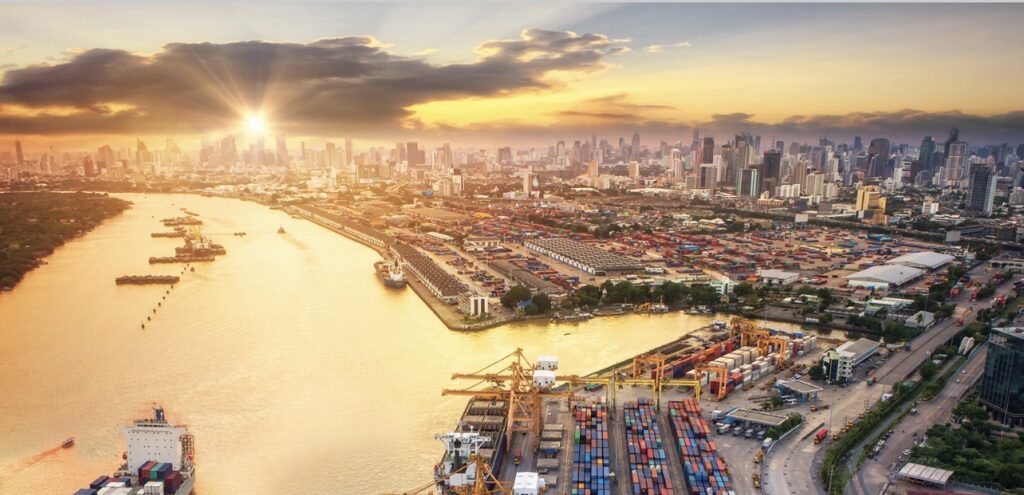The power of sustainability in supply chains
From data analysis to digital management, innovative tools and access to expertise are helping firms to meet their sustainability goals
Only a few years ago, supply chains were solely focused on productivity and efficiency; now companies must factor in new complexities, not only of climate change-related risk but also the responsibility to reduce carbon emissions, a trend driven by pressure from customers, investors and employees to be more transparent about sustainability.

In order to reduce emissions, it is a given that companies must limit the use of electricity and burning of fossil fuels in their own operations. These corporate emissions are known as Scope 1 and 2, and are a natural focus for sustainability efforts. But to be truly responsible, firms must also look at what are called Scope 3 emissions – those that are produced not by them, but by their suppliers and other operators within their supply and distribution chains. “Supply chains are an important piece of the puzzle,” says Mourad Tamoud, Chief Supply Chain Officer at Schneider Electric, a global leader in the digital transformation of energy management and automation. “Organisations should be working on rapidly decarbonising their supply chains so we can collectively make an impact.”
Scope 3 emissions can occur in both upstream and downstream operations; they include emissions from electricity use associated with making the raw materials a company buys, as well as those from disposal of company waste, commuting by company employees, environmental performance of firms the company invests in, and so on. It’s a complicated network of operations, and one that poses a challenge to companies looking to do the right thing. “Decarbonising the entire value chain is a significant undertaking – and a lot of companies don’t know where to start,” says Tamoud.
There are practical difficulties, too. Decarbonisation requires investment, seemingly without any of the short-term returns one might expect, which can make it harder to find the necessary funding. Green raw materials can be difficult to source, and the volatility of the past few years has pressurised and stretched supply chains, many of which remain vulnerable to external shocks.
Technology can help. “The first thing any company looking to decarbonise their supply chain should do is to find a trusted sustainability partner,” Tamoud suggests. Sustainability consultancies can leverage their tools and expertise to move quickly and save money, he says, and specialist advisers can offer recommendations and tailored advice to help companies make the biggest possible impact.
In an initiative called the Zero Carbon Project. Schneider Electric is working with its 1,000 top suppliers to help them halve the carbon emissions from their own operations. It uses digital tools to help suppliers measure emissions across facilities, factories and distribution centres. This data is then used to set goals and strategies to reduce energy waste, improve efficiency and lower costs. The project supports them with expertise and workshops to discuss strategies and share best practices.
Such collaborations to decarbonise supply chain emissions will be needed across the board. That’s because more than 50 per cent of global greenhouse gas emissions come from supply chains across eight major industries, according to a report from the World Economic forum. These are: food, construction, fashion, fast-moving consumer goods, electronics, automotive, professional services and freight. End-to-end decarbonisation of these supply chains could add as little as 1 to 4 per cent to end-consumer costs in the medium term. “By engaging suppliers to create a net zero supply chain, companies can boost their climate impact, enable emission reduction in hard-to-abate sectors, and accelerate climate action in countries where it would otherwise not be high on the agenda,” the World Economic Forum says.
One successful emissions-reduction strategy, in particular for manufacturing, is to use digital technology to integrate energy management and process automation. “Connected digital solutions collect data that show where you have opportunities to improve efficiency and remove waste,” Tamoud says. “At Schneider Electric, we use our own EcoStruxure solutions in our factories and distribution centres to do just this.” The system includes augmented reality, remote monitoring and predictive maintenance, which together increase agility and resilience.
As an example, Tamoud highlights the Scheider Electric factory in Lexington (a World Economic Forum Sustainability Lighthouse), which uses the EcoStruxure tool to monitor energy consumption across all critical processes. These efforts have enabled the plant to lower energy consumption by 3.5 per cent annually, saving over $6mn in recent years. “Technology makes the invisible visible. If you’re not measuring it, you don’t know what your baseline is or where you can improve,” Tamoud adds.
It’s an approach that many companies are now embracing. Their emissions – both direct and indirect – are no longer out of sight and out of mind. And with the right help and technology, the scope for emissions reductions and more sustainable operations has never been greater.
Source:FT
You must be logged in to post a comment.